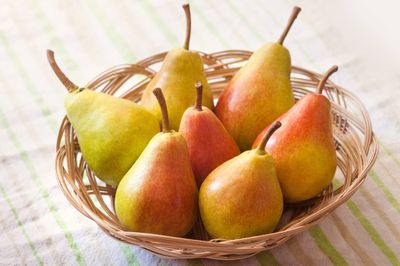What is a Luscious Pear?
Luscious pear is cross between South Dakota E31 and Ewart created in 1954. It is an early maturing pear that is easy to care for with disease resistance to fire blight. Once the tree has established, it only requires consistent watering and a soil test every few years to check on fertilizer needs. Unlike other fruiting trees, Luscious pear trees will continue to bear profusely with only infrequent pruning. It is cold hardy and can be grown in USDA zones 4 through 7. The tree will begin bearing at three to five years of age and will grow to around 25 feet (8 m.) tall and 15 feet (5 m.) across at maturity.
Growing Luscious Pears
Luscious pears are adaptable to a wide range of soil conditions but do require full sun. Prior to planting the pear tree, take a look around at the selected planting site and consider the mature size of the tree. Make sure there are no structures or underground utilities that will be in the way of the tree’s growth and root system. Luscious pears require a soil with a pH of 6.0-7.0. A soil test will help to determine if your soil is within this range or if it needs to be amended. Dig a hole that is as deep as the root ball and two to three times as wide. Set the tree in the hole, making sure that the top of the root ball is at ground level. Spread the roots out in the hole and then backfill with soil. Firm the soil around the roots. Make a rim around the hole that is about 2 feet (61 cm.) away from the tree trunk. This will act as a watering trough. Also, lay 3 to 4 inches (8-10 cm.) of mulch around the tree but 6 inches (15 cm.) away from the trunk to retain moisture and retard weeds. Water the new tree in well.
Luscious Pear Tree Care
Luscious dessert pears are pollen-sterile trees, which mean they cannot pollinate another pear tree. In fact, they require another pear tree to pollinate. Plant a second tree near the Luscious pear such as:
Comice Bosc Parker Bartlett D’Anjou Kieffer
The mature fruit is typically bright yellow blushed in red. Luscious pear harvesting occurs before the fruit is fully ripe, around mid September. Wait until a few pears fall naturally from the tree and then pick the remaining pears, twisting them gently from the tree. If the pear doesn’t easily pull from the tree, wait a few days and then try harvesting again. Once the fruit is harvested, it will keep for a week to ten days at room temperature or much longer if refrigerated.
